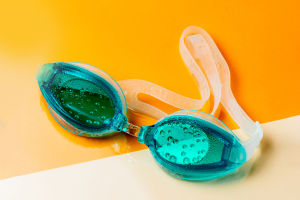Waterproofing your bathroom is a critical step in ensuring the long-term durability and functionality of the space.
By implementing effective waterproofing measures, you can prevent water damage, mold growth, and costly repairs down the line. Let's explore the essential measures to waterproof your bathroom, providing you with detailed insights and practical tips.
Identify Vulnerable Areas:
Before starting the waterproofing process, it's crucial to identify the areas in your bathroom that are most susceptible to water damage. Common vulnerable areas include the shower enclosure, bathtub, walls surrounding the wet area, and the floor. Inspect these areas thoroughly to assess any existing leaks or signs of moisture.
Sealant Application:
Sealing joints, gaps, and seams is an integral part of waterproofing your bathroom. Use high-quality silicone or polyurethane-based sealants to seal around fixtures, such as the bathtub, showerhead, and faucets. Ensure a proper bond between the sealant and the surfaces to create a watertight seal. Regularly inspect and reapply sealants to maintain their effectiveness.
Waterproof Membranes:
Waterproof membranes serve as a protective barrier against water infiltration. Apply waterproofing membranes to the shower walls and floors, ensuring full coverage. There are various options available, including liquid-applied membranes, sheet membranes, and cementitious coatings. Follow the manufacturer's instructions to apply and cure these membranes properly.
Shower Enclosure Waterproofing:
Pay special attention to the shower enclosure, as it is constantly exposed to water. Use a combination of waterproofing measures, such as installing a waterproof backer board or cement board on the walls, applying a waterproof membrane, and sealing joints and corners with waterproof sealants. Additionally, ensure that the shower door or curtain effectively contains water within the enclosure.
Floor Waterproofing:
Waterproofing the bathroom floor is crucial to prevent water seepage and subsequent damage. If you are installing a new floor, choose materials like ceramic tiles, porcelain tiles, or vinyl that offer inherent water resistance. Apply a waterproofing membrane or coating beneath the floor tiles to create a moisture barrier. Properly seal floor-to-wall transitions to avoid water penetration.
Wall Waterproofing:
Protecting the walls from water damage is essential for maintaining the integrity of your bathroom. Apply a waterproofing membrane or coating on the walls surrounding the shower or wet area. Ensure that the membrane extends at least 150mm above the showerhead level. Consider using moisture-resistant gypsum boards or cement boards instead of standard drywall for added protection.
Proper Drainage:
Effective drainage is a critical aspect of bathroom waterproofing. Ensure that the floor slopes towards the drain to facilitate proper water flow and prevent stagnant water. Install a high-quality, properly functioning drain system that efficiently removes water from the bathroom. Regularly inspect and clean drains to prevent clogging and water buildup.
Grout and Tile Maintenance:
Maintaining the integrity of grout and tile surfaces is vital for long-lasting waterproofing. Use epoxy grout, which is highly resistant to moisture, in areas exposed to water. Regularly inspect the grout for cracks or deterioration, and promptly repair or replace damaged areas. Ensure that tiles are properly installed and sealed to prevent water penetration through gaps.
Waterproofing your bathroom is a proactive approach to safeguarding your investment and ensuring the longevity of your space. By implementing the measures outlined above, you can effectively protect your bathroom from water damage, mold growth, and structural issues. Remember to regularly inspect and maintain your waterproofing systems to ensure their ongoing effectiveness. With proper waterproofing, you can create a functional, durable, and beautiful bathroom that withstands the test of time.


